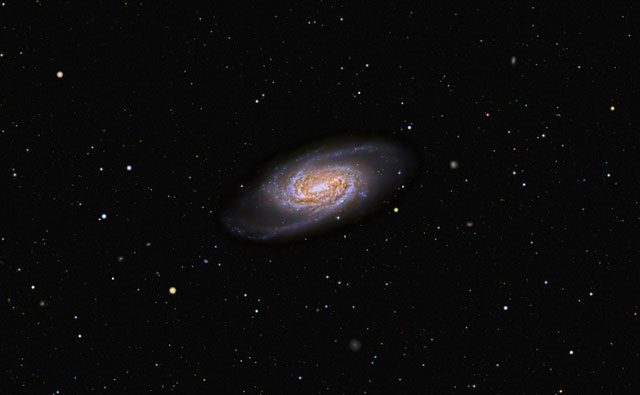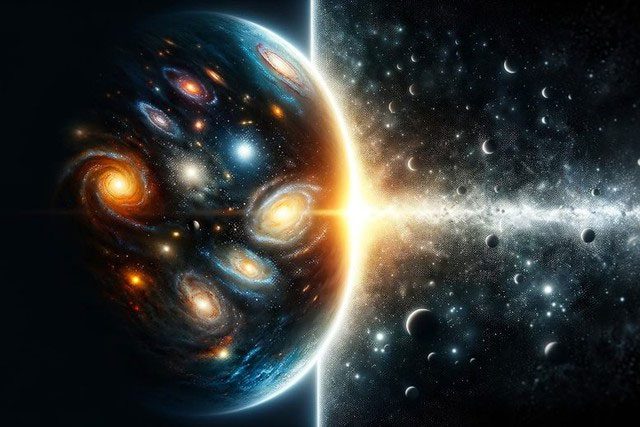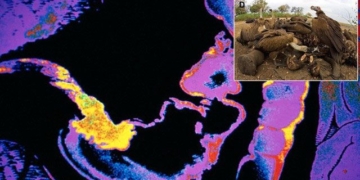Have you ever thought that the universe could be a gigantic neural network and that we are all a part of it?
It may sound ridiculous, but what does it mean when scientists discover striking similarities between the structure of the universe and the human brain? This exploration began in 2012 when a computer scientist named Dmitry Kryokov put forward a bold perspective. He believes that the structure and developmental laws of the universe are very similar to the human brain, the Internet, and even the complex social networks of humanity. He and his research team used supercomputers to simulate the model of the universe, then simulated the Big Bang and the expansion processes of the universe, while also mapping out the large-scale spacetime curvature.

Dmitry Kryokov believes that the structure and developmental laws of the universe are very similar to the human brain. (Illustrative image).
These similarities cannot be a coincidence, at least that is what Dmitry and his team think. The more complex the system, the lower the probability of similarity, and there are no coincidental characteristics. If the universe and the human brain show this possibility of connection, then there must be some unknown factors behind it.
But what lies behind it? To answer this question, scientists have proposed a new theory called the Cosmic Neural Network Theory. This theory tries to use a new perspective to explain the mysterious relationship between the universe and the brain. It posits that the universe resembles a gigantic neural network and that we are all a part of it. This theory can explain not only the similarities between the universe and the brain but also the origins, evolution, and future of the universe.

This theory believes that the universe and the brain are complex systems. (Illustrative image).
The Cosmic Neural Network Theory is a theory that combines quantum physics and neuroscience. This theory believes that the universe and the brain are complex systems composed of basic units connected to each other. These basic units can be seen as a type of system resembling neurons.
This structure can transmit and process information, forming a structure similar to a neural network. The proponent of the Cosmic Neural Network Theory is a physicist named Sarkar Das. He published a paper titled “Cosmic Neural Network: A Quantum Neural Network Model of the Universe” in 2021.
Das believes that the basic unit of the universe is a structure called a Cosmic Neuron, which is a dual object consisting of a black hole and a white hole, connected by a wormhole.
A black hole is an astronomical object with an extremely strong gravitational pull that can consume surrounding matter and energy, while a white hole is an astronomical object with a strong repulsion that can eject matter and energy outward.

A black hole is an astronomical object with an extremely strong gravitational pull that can consume all matter. (Illustrative image).
A wormhole is a channel connecting two different points in space, allowing for rapid transfer of matter and energy between the two points. Das believes that the neurons in the universe can connect with each other through wormholes to form a vast cosmic neural network that can transmit and process information just like the neural network of the brain, thereby creating complex phenomena and laws.
Das also believes that the information of the cosmic neural network is based on qubits. A qubit is a unit of information that can exist in two states simultaneously, enabling capabilities that far exceed classical computations, while also possessing quantum entanglement and quantum teleportation.
Das’s theory attempts to explain not only the structure and functioning of the universe but also its origins and evolution. He believes that the initial state of the universe was a singularity, an incredibly small, dense, and hot point containing all matter, energy, and information. At some point, the collapse of the quantum wave function occurred at the singularity, a process from uncertainty to certainty, leading to the splitting of the singularity and the creation of the first cosmic neurons.

Sarkar Das believes that the initial state of the universe was a singularity. (Illustrative image).
The black hole part of this cosmic neuron continues to divide, creating more cosmic neurons, while the white hole part expels matter and energy, forming the matter of the universe. This process is what we call the Big Bang, marking the birth of the universe and the emergence of the cosmic neural network.
After the Big Bang, the cosmic neural network continued to expand and develop, transmitting and processing information through qubit exchanges, resulting in various phenomena and laws of the universe, such as gravity, dark matter, dark energy, cosmic background radiation, galaxies, stars, planets, life, and much more.
Das believes that these phenomena and laws are the results of the information processing of the cosmic neural network; they reflect the internal logic and purpose of the cosmic neural network and may also suggest a type of intelligence or consciousness within the cosmic neural network.
He also believes that the information within the cosmic neural network is not entirely closed and will leak to a certain extent, leading to some instabilities and randomness in the universe. These uncertainties and randomness can be observed through some complex experiments, such as the double-slit experiment, Bell’s inequality experiment, quantum entanglement experiments, and more.

The cosmic neural network is not entirely closed and will leak to a certain extent. (Illustrative image).
These experiments have shown some phenomena of quantum physics that cannot be explained by classical physics concepts but must be interpreted through quantum physics concepts. These quantum physics concepts are essentially manifestations of information leakage from the cosmic neural network. Das also believes that the information in the cosmic neural network is not entirely isolated; it will diffuse and spread to a certain extent, leading to a certain diversity and complexity in the universe.
This diversity and complexity can be explored through the study of various organisms, such as the origins of life, the evolution of life, and the distribution of life. These studies have shown that life is an incredibly miraculous and mysterious phenomenon, with many forms, functions, purposes, and values of its own.

Life is an incredibly miraculous and mysterious phenomenon. (Illustrative image).
Although the Cosmic Neural Network Theory is a very intriguing and meaningful theory, it also has some limitations and issues. This theory has not yet been fully supported by experiments and observations and is merely a conjecture based on mathematics and logic, requiring further evidence to prove its validity and value.
At the same time, it involves many new mathematical and physical concepts that are difficult for the average person to understand and accept. It also requires extensive calculations and simulations to verify and demonstrate its effects and significance. The Cosmic Neural Network Theory is a very promising and potential theory; it offers us new possibilities and opportunities, allowing us to use a unified framework to study various phenomena of the universe and the laws of the brain.


















































